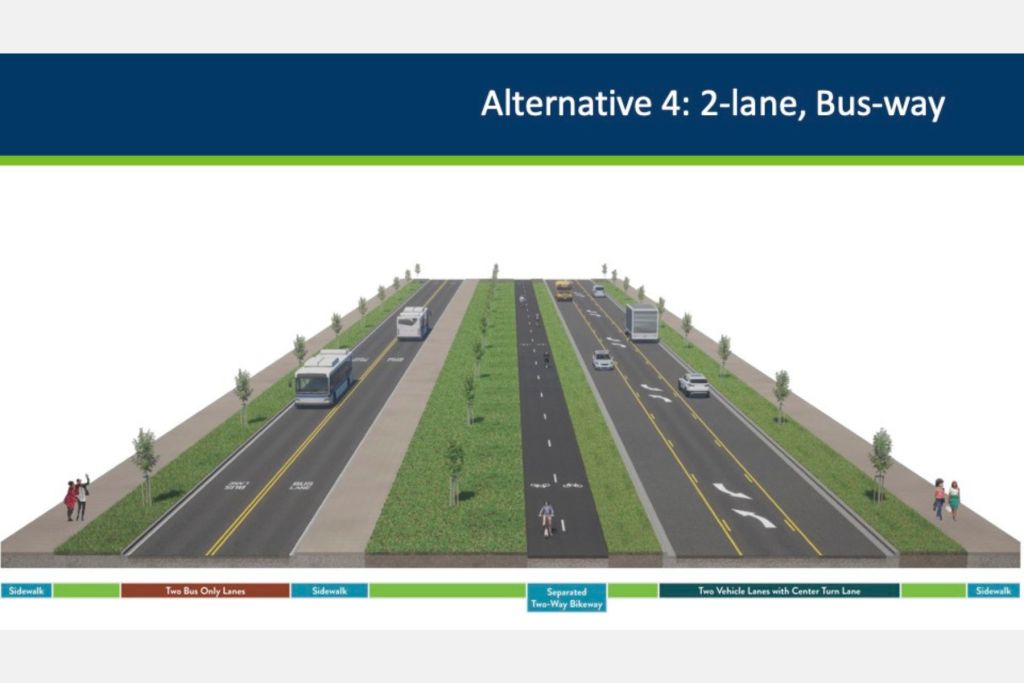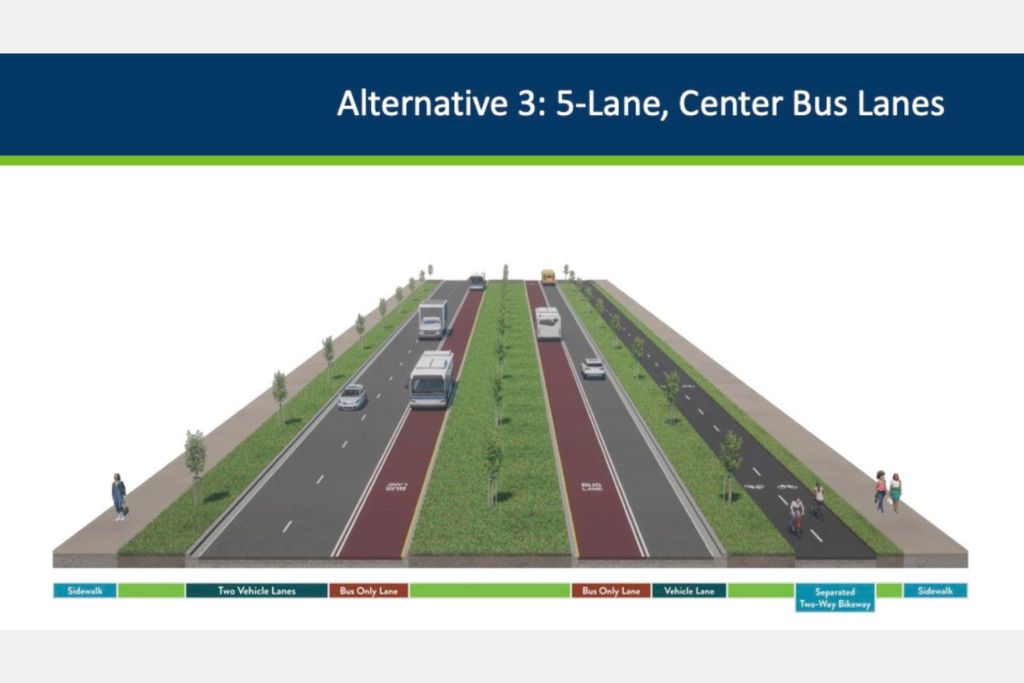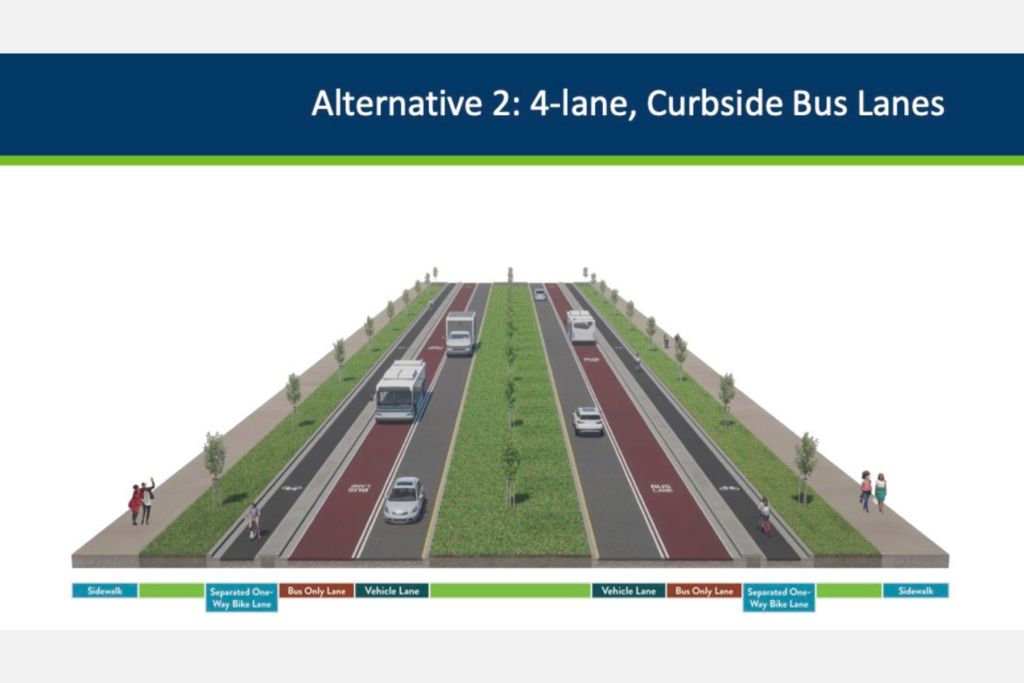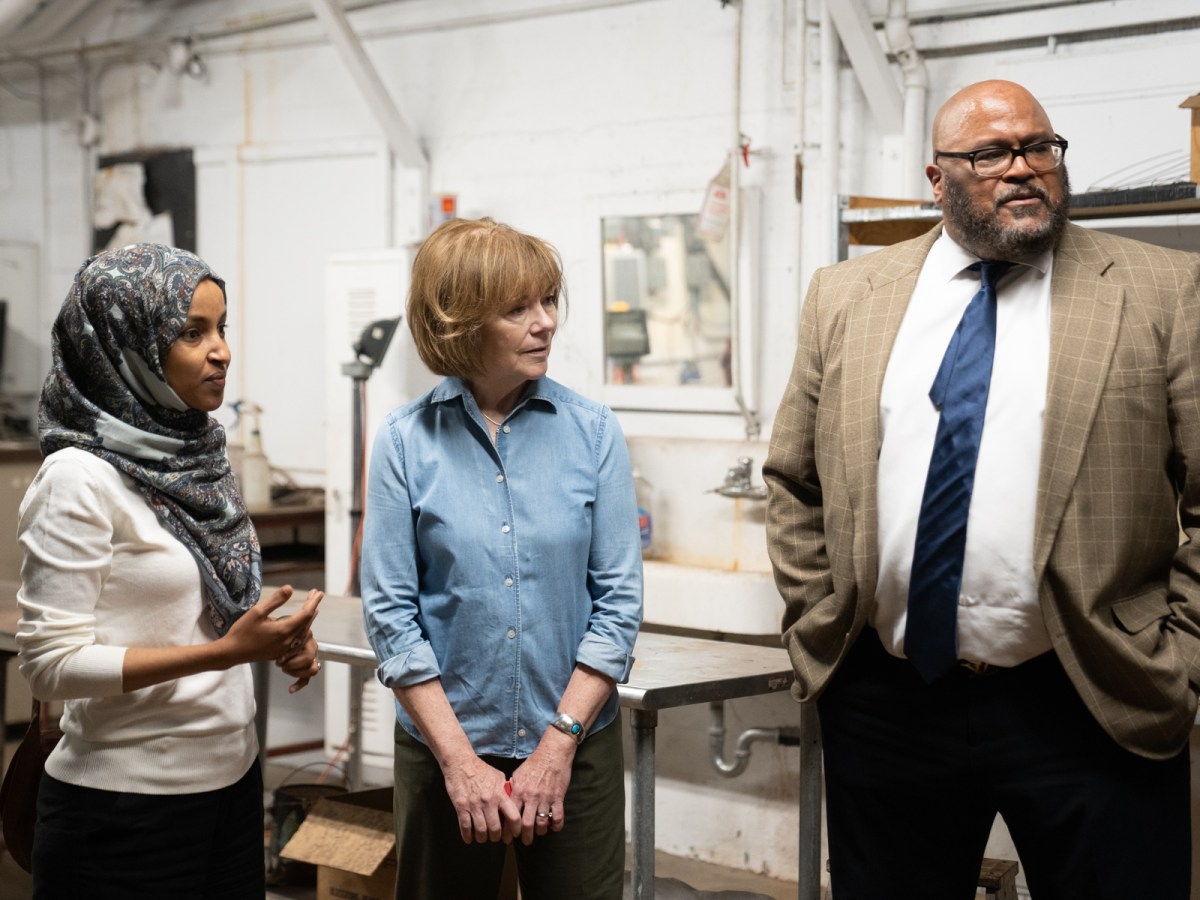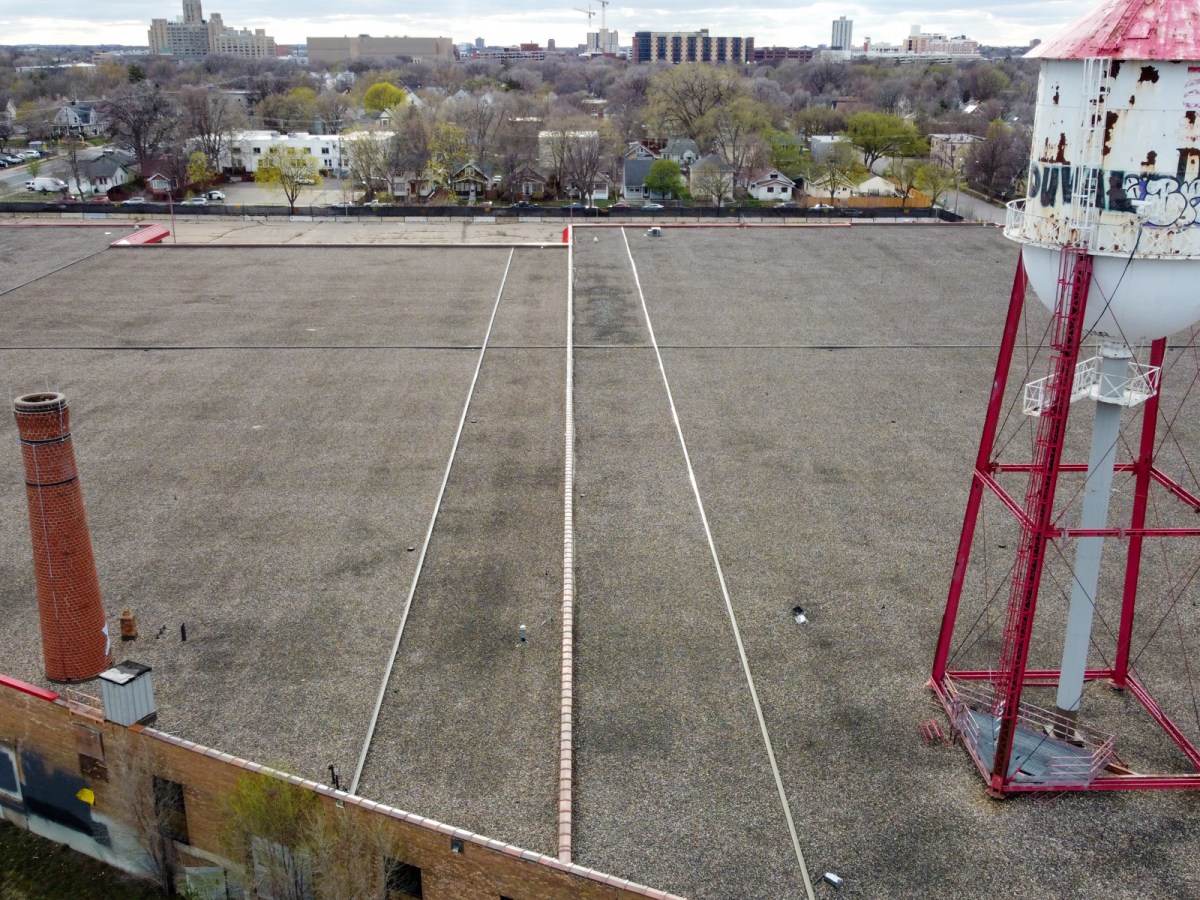Minnesota transportation officials on Tuesday debuted new design options to remake a state highway that runs through north Minneapolis into a better place to walk, bike, and take transit.
Preliminary designs for a renovation of Olson Memorial Highway, or Highway 55, through the Northside show the Minnesota Department of Transportation (MnDOT) is leaning toward shrinking the roadway’s large footprint.
“Things are changing; the use of the roadway is changing,” said Khani Sahebjam, metro district engineer for MnDOT.
Olson Memorial Highway runs from downtown Minneapolis through the western suburbs. MnDOT plans to reconstruct the highway between Border and Thomas avenues, from downtown Minneapolis to Theodore Wirth Regional Park, in 2028.
The highway tore through a large Black and Jewish community when it was built in the 1940s, offering a preview of devastation wrought by highway construction along Interstates 35 and 94 two decades later.
The six-lane highway expands at intersections through north Minneapolis’ Harrison neighborhood, but its width isn’t justified by its use, MnDOT says. West metro commuters began using Interstate 394 to enter downtown in the 1990s, and today Olson Memorial Highway averages 15,000 vehicles per day in the project area.
The designs released by MnDOT would reduce the amount of vehicle lanes. Three of the four designs feature dedicated bus lanes. All include bike lanes and expanded sidewalks on each side of the street.
Feedback from residents prioritized making the area safer for people walking and biking, according to Christina Perfetti, who is leading community engagement efforts for MnDOT. Olson Memorial Highway is one of the most dangerous streets in Minneapolis, according to a 2022 study by the city. The roadway is considered a “high-injury street” by city public works.
The designs’ embrace of multimodal transportation is helping to modernize the metro, Sahebjam said.
Raised in Germany by Iranian parents, Sahebjam said he believes the United States is 40 years behind other parts of the world when it comes to prioritizing travel modes other than cars.
“I’m glad we’re doing that,” he said.
Last fall, MnDOT narrowed the roadway from three to two lanes in each direction with plastic bollards and improved crosswalks after a resurfacing project.
MnDOT applied for a federal “reconnecting communities” grant to support the project and expects to learn whether it will receive that funding this spring, Perfetti said. Such grants aim to remove or retrofit highways in marginalized neighborhoods negatively impacted by road construction. St. Paul received a reconnecting communities grant in 2023 in support of the Reconnect Rondo land bridge project on Interstate 94.
Designs narrow roadway, boost transit
The Harrison Neighborhood Association and the bike and pedestrian advocacy group Our Streets Minneapolis spent the past three years advocating for a design that would re-establish 6th Avenue North, the local street destroyed to create the highway. Their Bring Back 6th Campaign aims to make the highway a street for local use and mass transit, and to develop housing and other community-serving infrastructure in Olson Memorial’s large right-of-way.
One design option leans into that vision, with one vehicle lane and one dedicated bus lane in each direction and separated bike lanes and sidewalks on each side of the street.
Engineers collaborated with Metro Transit to consider a design that would completely separate bus traffic from single-use vehicles. The plan would place dedicated bus lanes traveling in each direction on one side of the roadway, a two-way bike track along the median, and a three-lane vehicle alignment on the opposite side.
The highway now serves the C Line bus rapid-transit route, and is slated to host a future bus rapid-transit line connecting downtown to the western suburbs.
“We know that Highway 55 is a really important corridor for transit in the region,” project manager Mike Samuelson said.
Another design leaves two car lanes heading east into downtown Minneapolis alongside a dedicated bus lane, but has just one vehicle lane heading west alongside a bus lane and a two-way bike trail. Unlike most roadways, traffic on Olson Memorial in Minneapolis is always heavier heading downtown, Samuelson said.
RELATED STORIES
How to weigh in
MnDOT is seeking comments on its design options from users and neighborhood residents. The agency plans to door-knock in the area, Perfetti said, and will run ads on the C Line and in local radio stations.
People can weigh in at two upcoming open house meetings:
- Tuesday, March 12, from 6 to 8 p.m. at Bethune Community School, 919 Emerson Ave. N.
- Tuesday, March 26, from 4:30 to 6:30 p.m. at Summit Academy, 935 Olson Memorial Highway.
MnDOT also has an online survey available in English, Hmong, Spanish, and Somali that can be found here.




